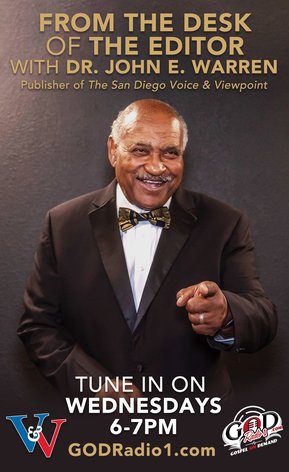
By Voice and Viewpoint Newswire
Enoch Ampofo, a first-generation college student, transferred from Foothills College to San Diego State University without a plan, inspired by his father’s migration from Ghana to the U.S. not knowing what he was going to do. Working at the Oakland Zoo, Enoch saved money to move, telling his family a month before. Leaving his mom, dad, and little brother behind was challenging. “I put everything in my car and drove from the bay.”
According to SDSU’s Analytic Studies & Institutional Research, African Americans were only 3.5% of the undergraduate population in the Fall of 2024. Enoch, culture shocked by the amount of black people, felt uncomfortable when people didn’t want to work with him. He dispelled judgmental notions with work ethic and personality. “I look at it as a blessing that I am even here. In America, you got to be okay with being in spaces where people don’t look like you. It’s all about adapting to where you fit in.” Growing up around barbecues, parties, and cultural events shaped his idea of comradery.
Despite being an ethnic minority, Enoch has a cumulative GPA of 3.4 majoring in Journalism, with an emphasis in Advertising, because in junior college he became familiar with talking to people. “Journalism allows me to have conversations with people I wouldn’t normally talk to. Growing up, I was always good at Math, but not so good with writing, so I wanted to challenge myself, and improve at a skill that I would use for the rest of my life.”
When you think about Black Excellence, you should envision well-educated and community-oriented role models in positions of leadership, succeeding despite hardships. One of his cousins told him to do the most without regrets, since college is a once in a lifetime opportunity, so he joined many different community groups, ascending to various leadership roles. An internship with Duke’s Office of Diversity and Inclusion, connected Enoch to people that looked like him and provided him spaces where he felt supported. “Without DEI programs, a lot of doors that were opened for me and other Black students wouldn’t exist.”
With the A.M.A.N.I. project, Enoch gives students at NYE Elementary a leader to look up to. He mentors commuter and transfer students as a member of the Young Men of Color Alliance (YMOCA). He organizes with the Afrikan Student Union to host events and recruit high school prospects. As the Vice President of the Black Transfer Club, he embraces and makes transfer students comfortable. In the Black Resource Center, he resolves problems for his five mentees, all while coordinating marketing efforts as an SDSU Athletics intern.
What’s next for Enoch? “I didn’t experience much Ghana culture, other than weddings and parties, because my little brother was born premature. Not wanting to overwhelm him, doctors encouraged him to speak one language, English. I want to get more involved with the attire, food, and language.”
He wants to expand on the Black Resource Center’s Sankofa initiative, connecting black alumni with current students. “The challenge is getting people in one spot because people move.” During Thanksgiving, he wants to organize student-cooks to prepare meals for a drive-through food pickup. and plans to connect with Helix and Lincoln High School’s Black Student Unions to give them someone to look up to as a well-educated leader in Black Excellence.


